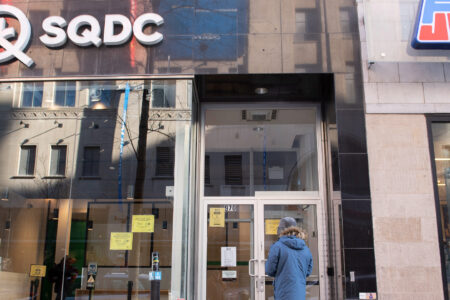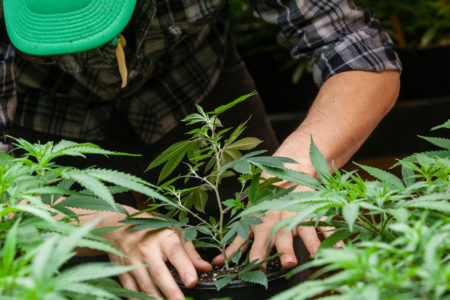
Much of the recent policy discussion around cannabis has focused on ways to develop and price legal pot to compete with — and undermine — the illegal black market. But there is another market in this equation: the medical marijuana market. Will the medical market compete for customers with the recreational market? This is an important question for policy-makers, particularly as provincial agencies are in the process of setting retail prices.
The cannabis market is indeed an unusual one, in which the same product has both recreational and medicinal uses — the rum toddy of our age. It will be difficult to discern which buyers are which. We do not think it is a stretch to suggest that both kinds of buyers will be looking for the best prices and quality possible. Ideally, but perhaps not realistically, the medical market would include people buying cannabis only for health reasons, since this would be useful for assessing cannabis as a medicine for clinical evaluation and medical testing.
To understand how the medical cannabis market might undercut the recreational market, it’s helpful to look at the specific ways it is regulated and how that regime differs from the emerging rules for recreational markets.
There are currently 113 federally licensed producers (LPs) of medical cannabis, and a large proportion of these can also sell directly to patients who have received medical authorization from a health care practitioner. Medical orders are made online through the websites of LPs and delivered by the courier mail system. So far, the announcements about recreational markets made by provincial and territorial governments have not clarified how access will occur in regions not served by stores, but we expect some online services with home delivery will develop.
There are no federal restrictions on what licensed producers of medical cannabis can charge their customers, and medical cannabis patients can seek out the best prices and quality across geographical boundaries. By contrast, provincial-territorial stores will set their retail prices for the same product uniformly within their jurisdictions, with the exception of Ontario and Saskatchewan, where private stores with provincial licences may set their own retail prices. Currently, medical marijuana prices range widely, from $6 to $25 per gram with an average of $9 for dried flower.
To appreciate how much interprovincial buying of medical cannabis goes on currently, let’s take a closer look at the latest available month’s figures on the Health Canada data site, for March 2018. Alberta producers report 112,000 clients, Ontario LPs just under 124,000, and all of Canada has 297,000 clients. Alberta, with the dominant LP Aurora, appears to be supplying product outside its physical jurisdiction if you consider the high number of clients versus Alberta’s population size. This interprovincial purchase by medical patients highlights our central point that the medical market crosses provincial and territorial borders and is in a sense the “Canadian Store.”
Medical marijuana patients have been required to have a physician’s prescription, but getting one has hardly been onerous. To facilitate access to the medical market, some LPs refer patients to physicians or clinics. This practice has reduced the barriers that patients must overcome to obtain a prescription by allowing them to consult physicians electronically via Skype or similar services. We understand that these contacts consist mostly of casual check-ins that rarely hinder patients from securing permission to purchase.
In fact, Health Canada has no idea of the number of unique patients who are currently using medical marijuana. The department keeps track of clients per province as reported by all LPs combined, but some of these individuals might be buying from more than one producer. Patients are supposed to obtain a new physician approval form for each LP they purchase from, but there is no mechanism to verify that this is occurring.
In 2018, there has been a dramatic increase in the number of LPs of medical cannabis, as well as in LPs holding large inventories of ready-to-ship cannabis products in anticipation of the opening of the recreational market. For those LPs shut out of the recreational market (because they have no contractual arrangements with provinces and territories), or even for those LPs that have more products than they will be able to sell on the recreational market, the medical market will be available and potentially very attractive.
Currently, there is no reason to suspect that the medical market in Canada will disappear, despite the Canadian Medical Association’s arguing it is no longer needed. Many still feel that there is a role for the physician as a gatekeeper, and that there is a proper place for cannabis as a medicine for some patients. What has made Canada a world leader in the medical cannabis field is the insistence on high standards and monitoring by Health Canada, and we think this pathway will continue to exist.
With this in mind, the impact of medical cannabis on the recreational market needs to be taken into consideration. If medical cannabis becomes more attractively priced, with the same quality or even better, customers will want to buy from this market, and we see it as unlikely that physicians will offer much push-back. Our conjecture is that if the price differential is too steep and creates disadvantages to local recreational markets, and if the stream of medical online buyers grows, provinces and territories may eventually exercise some restrictions. The most obvious ones would be to tighten physicians’ prescribing practices or to ask the federal government to step in with rules aimed at price uniformity.
The federal government has already levelled the playing field in one area by saying that all marijuana will be subject to GST/HST (really an excise tax) paid by consumers at the point of sale, with revenues to be shared equally by both levels of government. At present, the tax is $1 per gram, or 10 percent of the producer’s sale price of a product, regardless of whether the product is purchased for medical or recreational use. Medical patients have complained about taxes for their medicine, but governments have insisted on symmetry with the recreational market.
We think this symmetry argument has deflected attention from the overall issue of the medical market competing with the recreational market, particularly if the government agencies offer no price reductions for recreational users. The market for medical cannabis is the only market (including the black market) where customers or patients can purchase cannabis products outside their provincial or territorial jurisdiction if they are searching for lowest price and highest quality.
This article is part of The Economics of Canadian Cannabis special feature.
Photo: Shutterstock/By nhungboon
Do you have something to say about the article you just read? Be part of the Policy Options discussion, and send in your own submission. Here is a link on how to do it. | Souhaitez-vous réagir à cet article ? Joignez-vous aux débats d’Options politiques et soumettez-nous votre texte en suivant ces directives.










